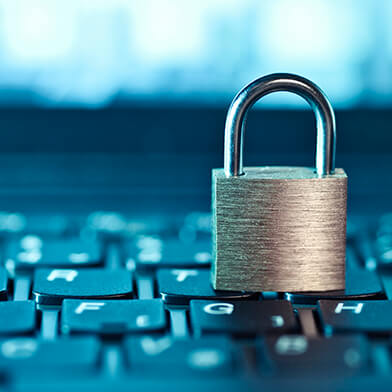How to spot and avoid phishing scams
May 5, 2023 • 5 minute read
How Phishing Scams Put Your Personal Data at Risk
Received a fraudulent email or text?
Received a fraudulent email or text?
If you’ve received an email or text from WSECU and believe it is fraudulent, you can report it here: phishing@wsecu.org. Please be sure to attach the email or a screenshot of the text for review.
If you responded to the email or text or clicked on any links, please call our Contact Center at 800.562.0999. We’re available 7:00 am-7:00 pm Monday-Friday and 9:00 am-2:00 pm Saturday.
How phishing scams put your personal data at risk
Phishing scams occur online when data thieves coerce unsuspecting internet users into giving them personal or financial information like passwords, bank account numbers and Social Security numbers. From there, the scammers gain access to their target’s email, financial or other online accounts.
In 2022, phishing and related scams accounted for more than $52 million in losses, according to the FBI’s Internet Crime Complaint Center. According to the same source, Washington state was tenth among states with the highest number of cybercrime victims.
While these statistics may seem alarming, there are some basic steps you can take to protect yourself from cybercriminals and phishing scams.
When to be suspicious
Many scams that come in the form of email and text messages can seem legitimate at first. Phishing emails often include brand logos or official seals to make them seem genuine. For example, because some emails, or even phone calls, have effectively mimicked government agencies, many people have fallen victim to scammers impersonating the IRS, especially during tax time.

No matter how legitimate or authentic messages may seem, it’s okay to treat any correspondence with a healthy dose of suspicion.
Keep a sharp lookout for the following:
- Messages with spelling errors and unprofessional language
- A sense of urgency and a request to act quickly
- Unsolicited reports indicating suspicious activity on an account
- Notices about payment processing issues
- Invoices or receipts for items you did not purchase
- Requests to verify your personal information
- Messages asking you to click on a link to confirm data or sign in to an account
- Offers for free goods or services
Even if everything looks okay but something doesn’t feel quite right, trust your instincts and take the following steps to avoid being scammed.
Good habits for self-protection
The key to safeguarding your data and accounts from phishing scams is reading email and text messages carefully and following some basic best practices.

Best practices
- Research to verify the sender. Sometimes a simple online search will let you know if the message is a scam.
- Visit the Washington state attorney general’s website to see if there are any relevant consumer scam alerts if you are still unsure.
- Avoid clicking on links or offering any information without first confirming the legitimacy of a message.
- Use multifactor authentication to add an extra layer of digital security to your online accounts — especially those storing any of your personal information.
- Use a password manager to secure your accounts in one safe place.
- Turn on your email spam blocker.
- Keep your internet security software up to date on both your phone and computer.
- Turn on automatic updates for your operating systems, internet browsers and any other system software.
- Immediately change passwords to any accounts that may have been compromised.
Reporting phishing scams
It’s important to report phishing scams to help protect other consumers from becoming victims. Your report could lead to an arrest or, at the very least, put the scammers out of business.
You can report phishing scams to the Federal Trade Commission (FTC) on their website. You can also file a consumer complaint with the Washington attorney general’s office and your local law enforcement. The more people you can warn about a phishing scam, the less likely they will be to fall victim to it.

